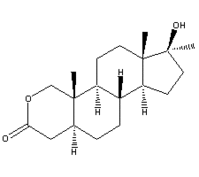Business Editors/Health/Medical Writers
BIOWIRE2K
EAST BRUNSWICK, N.J.--(BUSINESS WIRE)--June 30, 2003
Savient Pharmaceuticals, Inc. ("Savient") (NASDAQ:SVNT) today announced the expansion of its Oxandrin(R) marketing and sales focus, to include the treatment of involuntary weight loss associated with cancer.
Involuntary weight loss in patients with cancer invariably consists of a disproportionate loss of muscle and other lean tissue. Such loss of weight and muscle mass is associated with several adverse outcomes in cancer patients, including shorter survival, increased side effects of cancer therapy, decreased quality of life and decreased functionality. While estimates vary, 60-80% of patients with cancer will experience significant weight loss at some point during the course of their cancer.
"Our past Oxandrin marketing and sales efforts have been focused primarily on the HIV/AIDS and long-term-care markets for involuntary weight loss, and have been very successful in addressing the needs of these patient populations. In fact, first quarter 2003 prescriptions grew 21% over the same period in 2002," said Christopher Clement, President and Chief Operating Officer of Savient. "We are now extending our reach by entering the sizable cancer market, estimated at more than 1.3 million diagnosed patients each year. Many of these individuals suffer from involuntary weight loss as a consequence of their disease or the treatment they receive for it. New data from our clinical study in patients with a variety of cancers support the value of Oxandrin as an adjunct for weight gain and should help to increase awareness among both prescribers and patients of the potential of Oxandrin to be of benefit to this patient population. Our focus on this sector should also allow us to further enhance Oxandrin's ongoing commercial growth."
Final study data from the Company's open label clinical study of 131 patients with cancer as well as new safety data from two laboratory models addressing theoretical safety concerns for the use of an androgen in cancer were presented on May 31, 2003 at the 39th Annual Meeting of the American Society of Clinical Oncology (ASCO).
These data confirmed that Oxandrin therapy in patients with cancer-related weight loss resulted in weight gain and an increase in lean tissue weight. Scores for variables known to be adversely impacted by weight loss, such as quality of life and functionality, also increased and paralleled the weight increase.
The results of the laboratory studies demonstrated no interaction with hormone receptors other than the androgen receptor and no stimulation of human tumors with Oxandrin at up to ten times therapeutic doses.
No adverse effect on oncologic outcome was noted in study patients by the investigators or in the final data analysis. Oxandrin was generally well tolerated in the study population, with side effects similar to those seen in other studies of Oxandrin in disease-related weight loss. For example, laboratory findings may include changes in blood lipids and transient mild elevations of specific liver tests (transaminases); patients with a history of leg swelling or congestive heart disease may experience symptoms related to fluid retention. No Oxandrin-related serious adverse events were reported in this study population of weight-losing cancer patients. All serious adverse events recorded during the study were listed as "unrelated" to drug by the individual investigators except for an unwitnessed death in an oxygen-dependent subject with advanced lung cancer categorized by one investigator as "possibly related".
Oxandrin(R) (oxandrolone, USP CIII), a synthetic derivative of testosterone, is the only oral anabolic agent that is FDA-approved as adjunctive therapy for the promotion of weight gain following weight loss due to extensive surgery, chronic infection, severe trauma, or unknown pathophysiology. It is available in 2.5-mg and 10-mg tablets.
About Savient Pharmaceuticals, Inc.
Savient Pharmaceuticals, Inc. (formerly Bio-Technology General Corp.) is a specialty pharmaceutical company with expertise in developing, manufacturing, and marketing human health care products for niche and wider markets. Products marketed by Savient's sales force in the United States are Oxandrin(R) (oxandrolone, USP) and Delatestryl(R) (testosterone enanthate). The Company's subsidiary, Rosemont Pharmaceuticals Limited, develops, manufactures, and markets through its own sales force oral liquid formulations of prescription products for the UK pharmaceutical market. The Company's Israeli subsidiary, Bio-Technology General (Israel) Ltd., manufactures and markets in Israel Bio-Tropin(TM) (recombinant human growth hormone), BioLon(TM) (sodium hyaluronate), Bio-Hep-B(R) (hepatitis B vaccine), and Arthrease(TM) (sodium hyaluronate for osteoarthritis). Products marketed by Savient's licensees are Mircette(R) (oral contraceptive), and BioLon(TM) in the United States, and Bio-Tropin(TM), BioLon(TM), Bio-Hep-B(R), Silkis(R) (vitamin D derivative), Arthrease(TM), and recombinant human insulin, in international markets. Savient's news releases and other information are available on the Company's website at www.savientpharma.com.
Arthrease is a trademark of DePuy Orthopaedics, Inc.; Mircette is a registered trademark of Organon, Inc.; Silkis is a registered trademark of Galderma S.A.
Statements in this news release concerning the Company's business outlook or future economic performance, anticipated profitability, revenues, expenses or other financial items; and statements concerning assumptions made or expectations as to any future events, conditions, performance or other matters, are "forward-looking statements" as that term is defined under the Federal Securities Laws. Forward-looking statements are subject to risks, uncertainties and other factors that could cause actual results to differ materially from those stated in such statements. Such risks, uncertainties and factors include, but are not limited to, changes and delays in product development plans and schedules, customer acceptance of new products, development, introduction, or consumer acceptance of competing products, changes in pricing or other actions by competitors, patents owned by the Company and its competitors, and general economic conditions, as well as other risks detailed in the Company's filings with the Securities and Exchange Commission.
COPYRIGHT 2003 Business Wire
COPYRIGHT 2003 Gale Group



